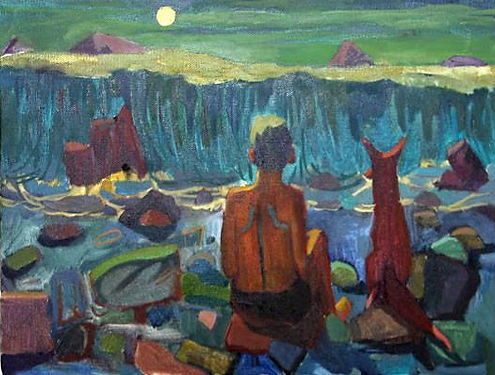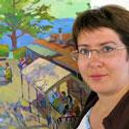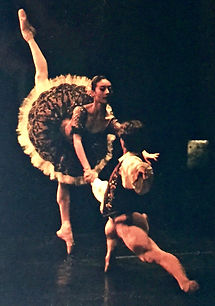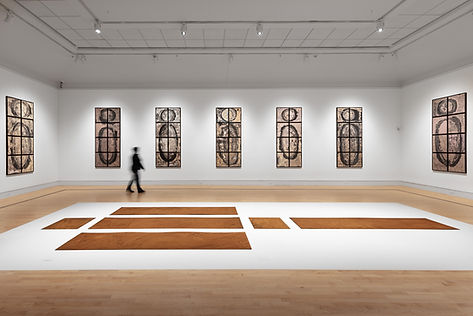Culture & Arts

The American public at the US gallery showing for the Pacifica Prize in San Francisco, CA, USA c. 2014
Diplomacy relies on cultural exchange that helps build cross-border understanding. The cultural traditions and the influence of these on all art forms shed light and offer deeper insight into the psyche of people who are geographically dispersed. Track Two brings arts and culture to every conference we hold. Participant artists, dancers, curators, music critics and journalists, authors, translators, documentarians, photographers, videographers have attended our gatherings. Their insights shift our perceptions and challenge us to set intellectualizing aside from time to time to seek the heart and humanity in our work. Culture makers have enjoyed collaborations inspired and ignited through our convenings. And we actively support the work of our cultural leaders as they continue to create through the vagaries of international politics, wars and global threats.
Cultural exchanges transcend language barriers and cultural divisions in a profound way, providing audiences with a glimpse of life across oceans and borders. These mediums speak to a different part of the human existence, a part that may be more open to understanding the ‘other’.
Esalen Pacifica Prize
The Esalen Pacifica Prize was launched in 2012 as a joint project between Track Two and Esalen CTR to highlight the role of the arts in enriching and deepening ties between Russia and the former republics of the Soviet Union, and the United States across a range of common interests – cultural, scientific, business and economic. In cooperation with the California College of the Arts, based in San Francisco, and The Far Eastern Academy of the Arts in Vladivostok, a group of four young, talented artists (two graduates from each institution) were selected as the award’s first recipients. The artists, specialists in painting and drawing, then spent four weeks in May 2012 working and living together at Esalen’s campus overlooking the Pacific. During the residency of the artists, Esalen hosted a public arts weekend workshop focused on the power of art to connect and inspire new thinking about areas of common interest, with subjects ranging from Russia’s evolving role in Asia’s economy to the impact of climate change on the Pacific Ocean. Session leaders included representatives from The Asia Society, Scripps Oceanic Institute, and the Dean of the California College of the Arts.

Promotional poster for the gallery showing of Pacifica Prize artists' work c. 2014


Olga Bulgakova
Olga Bulgakova lives and works in Vladivostok. Currently, she specializes in commissioned ornamental wall paintings; teaches painting privately; and is studying vitrage technique. She is a 2011 graduate of the Far Eastern Academy of the Arts and completed undergraduate studies at the Vladivostok Art School. In recent years, she has exhibited extensively in the Primorsky Region of the Russian Federation.
Daria Bonet

Daria Bonet lives and works in Vladivostok. A 2011 graduate of the Far Eastern Academy of the Arts, she currently teaches painting privately; works as a designer at the Arsenyev Museum, and is studying vitrage technique. Her work has been exhibited in the Russian Federation at leading venues in the Primorsky Region and, most recently, in St. Petersburg.



Rema Ghuloum
Rema Ghuloum, from Los Angeles, California, began teaching as a professor of art at California State University in Long Beach, California, in the fall of 2012. She completed her undergraduate studies in drawing and painting at California State University, Long Beach, and obtained a Master of Fine Arts (MFA) degree from the California College of the Arts in San Francisco in 2010. She has exhibited her work nationally, including in solo exhibitions, and has won numerous awards and art residencies.
Sarah Hotchkiss

Sarah Hotchkiss is based in San Francisco, California. When not painting, she is a regular contributor of art reviews to local media and also devotes time to exploring how art can be used to illuminate visions of the future. A graduate of Brown University, she received a Master of Fine Arts (MFA) degree from California College of the Arts in San Francisco in 2011. She has exhibited her work in several major cities in the US and has received numerous awards, including several residencies.

Joe Orrach Performance Project

Joe Orrach leads participants of Whom Do We Trust 2019 in a movement exercise in St. Petersburg, Russia c. 2019
The Joe Orrach Performance Project (JOPProject), lead by Track Two advisor Joe Orrach, is a dance, theatre, and performance art nonprofit that recognizes the vital importance of storytelling. In the process of sharing stories in an immersive artistic environment, audience members and participants are inspired to share their own stories. Workshops directly encourage individuals to find their voices, as JOPP holds that no one should be afraid to share their personal experiences. Track Two's partnership with JOPP brings shared, experiential group exercises to our conferences in an effort to open participants' hearts and minds. This community-building sets the stage for honest dialogue and deepened trust when broaching topics of great consequence that can, at times, prove contentious. When participants enter these conversation with candor and empathy fruitful collaboration comes to bear.
In 2024, Joe Orrach collaborated with storied Russian musician and Track Two participant Ilya Lagutenko after connecting at Track Two's Future Russia 2023 Conference.
Not The Day - Will Laut ft. Joe Orrach
"In My Corner" - Joe Orrach
Ballet Beyond Borders
In 1999 Track Two co-sponsored the Ballet Beyond Borders project with the Russian Cultural Fund in Moscow. Principal dancers from the San Francisco Ballet, directed by Russian native Yuri Possokhov, toured Russia, Ukraine, Khazakstan, Estonia, Georgia, and Lithuania showcasing the talents of the American ballet company to overseas audiences.
In 2003, Track Two sponsored another leg of the project's tour, bringing leading Russian dancers and members of The San Francisco Ballet, to perform in Santa Fe, New Mexico to sold-out audiences. Two of the pieces were performed and choreographed by principal dancer Yuri Possokhov, formerly of the Bolshoi ballet in Moscow and the San Francisco Ballet.

Dancers perform on tour with Ballet Beyond Borders c. 1999
Ingo Günther

Worldprocessor [402] Maritime Plastic (2018) by Ingo Günther
Ingo Günther is a conceptual artist. Even before he founded the first independent TV station in Eastern Europe (Leipzig’s Channel X) in 1989, he tried to cross-infuse journalism and art. His Worldprocessor project transforms data into visual art in the shape of globes that are haunting, evocative, and informing. Topics range from political conflicts and social issues to the natural world and other concerns. Well over 1,000 modified thematic illuminated globes were made. They are held in museum and institutional collections (i.e. Hood Museum, Dartmouth; Hiroshima Museum) but have also graced the covers and pages of political publications (Foresight, Harper’s, Le Monde diplomatique). His works have been shown at museum and biennials (e.g. Guggenheim Museum, Kunsthalle Düsseldorf; Venice Biennale; MIT Museum; documenta, Yokohama Triennale). Reporting on refugee camps in Asia inspired his project Refugee Republic. Ingo Günther holds a USCG captain’s license . He is currently preoccupied with the role that esthetics have played in the history of diplomacy: Diplomachine.
Interview with Ingo Günther (Big Bang Data)
Worldprocessor at Art Macao 2021
Kei Ito
Kei Ito is a Japanese American interdisciplinary artist whose work explores the invisible legacies of nuclear trauma, intergenerational memory, and cultural identity. A grandson of a Hiroshima survivor, Ito creates luminous, camera-less photographic installations that meditate on radiation’s lasting impact—on the body, the land, and our collective imagination.
Originally from Japan, Ito immigrated to the United States to pursue his studies and has since become a vital voice in Baltimore’s contemporary art scene and beyond. His work draws on personal and historical narratives of nuclear detonations, from Hiroshima and Nagasaki to American downwinder communities and reactor failures, inviting viewers into the intimate aftermath of these events.
Committed to cross-cultural dialogue and non-state diplomacy, Ito has participated in Track Two conferences in California, sharing his practice as a bridge between art, memory, and peacebuilding. His photographs, rooted in both personal loss and global urgency, resonate deeply with Track Two’s mission to confront the continuing threat of nuclear catastrophe with empathy, creativity, and collaboration.

Embodied Spectrum at the Museum of Contemporary Art Arlington, VA (2025)

Eye Who Witnessed at the Gregory Allicar Museum of Art, CO (2023)

Staring at the Face of the Sun at the Georgia Museum of Art, GA (2024)

Afterimage Requiem at the Southeastern Center for Contemporary Art - SECCA, NC (2019)
